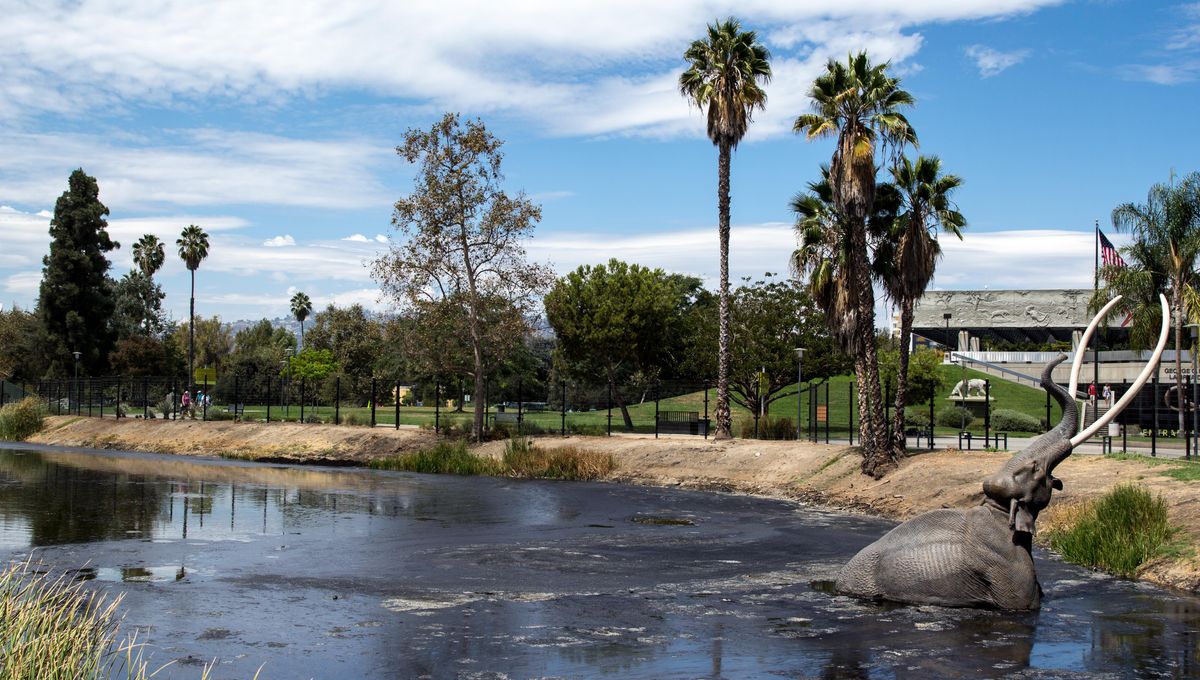
Researchers examining fossilized remains in the La Brea Tar Pit, Southern California, have come to a disturbing conclusion. According to a new, in-depth analysis, changing temperatures and human activity led to more wildfires at the end of the Pleistocene era, which caused the extinction of megafauna species that once thrived in the area. The results are worrying given the increasing number of wildfires blazing across many parts of America and Europe today.
At the end of the last Ice Age (about 13,000 years ago), around two-thirds of the planet’s large mammals outside of Africa disappeared in what probably represents the initial spike in the ongoing extinction processes we are witnessing today.
Across the globe, this mass extinction coincided with changes in the climate as well as the arrival of new human colonies. However, despite its significance for the ecosystem of the time (not to mention our understanding of the impacts our current crisis could have), we are still not completely sure what caused this event. This is because we lack reliably dated fossils and a precise chronology that shows when extinctions occurred in relation to environmental and human changes.
“The megafaunal extinction at the end of the Ice Age was the biggest extinction event to happen since an asteroid slammed into Earth and wiped out all the large dinosaurs,” co-author Dr Emily Lindsey, Associate Curator and Excavation Site Director at La Brea Tar Pits, said in a statement. “The problem has been that nobody has been able to determine exactly when most of these big mammals actually disappeared because the fossil record is really spotty. It’s hard to say much about what caused an extinction if you don’t know when it happened.”
To overcome this, Dr Lindsey and colleagues analyzed fossil records from the La Brea Tar Pits that belonged to eight large mammal species, including coyotes, horses, sabertoothed cats, the American Lion, dire wolves, and an ancient camel called a Camelops hesternus. Radiocarbon dating has shown that seven of these species went extinct around 13,000 years ago.
The La Brea Tar Pits are located across 13 acres (5 hectares) of land and are still active – filled with bubbling black asphalt that has risen to the surface from below the Earth. Once upon a time, prehistoric animals who got stuck in this broiling mass would slowly sink and die in it, which allowed their remains to be preserved as asphalt fossils.
Although this sucking ooze is deadly for those that get stuck in it, the remains that it holds are invaluable for scientific research. By comparing them with climate, pollen, and fire records from the area, as well as data on human population movement and growth, the researchers were able to rule out some of the competing explanations for the mass extinction. And unfortunately, it’s bad news.
“At the point where we found the human population to really start to increase in North America, we see an interval of profound climatic and ecologic change coupled with unprecedented fire happening right here, and it’s in this interval when all of the megafauna species disappear,” Lisa Martinez, a PhD student at UCLA who worked on the study, said.
The research establishes a disastrous chain of ecological connections that involved climate warming, reduction in tree pollen, and an increase in human populations, which culminated in the decline of large herbivores. According to their analysis, the loss of tree pollen also indicated an increase in fires, but the real cause of many fires was linked to human activity.
“When humans arrive we see major changes in the frequency of fires and fire intensity,” Dr Regan Dunn, paleobotanist and Assistant Curator at La Brea Tar Pits, added. “[Ninety-five] percent of the fires we see today are caused by anthropogenic sources from power lines or campfires that have gotten away, from highways or cigarettes or something like that. In a sense, we already know what happened, and what we learned from the past can help inform what will happen in the future and how better to plan to avoid ecosystem collapses.”
Regrettably, we now find ourselves bound in the same chain of events that led to this last mass extinction. Human-caused climate change is creating the conditions for prolonged droughts and large mammals are increasingly at risk of dying out. On top of this, wildfires are becoming bigger and more frequent. As such, it is important for us to pay attention to the warnings recovered from the black goop of La Brea Tar Pits. There is still time for us to act, but that window is closing quickly.
The study is published in Science.
Source Link: Ancient Megafauna Were Likely Killed By Human-Set Fires 13,000 Years Ago